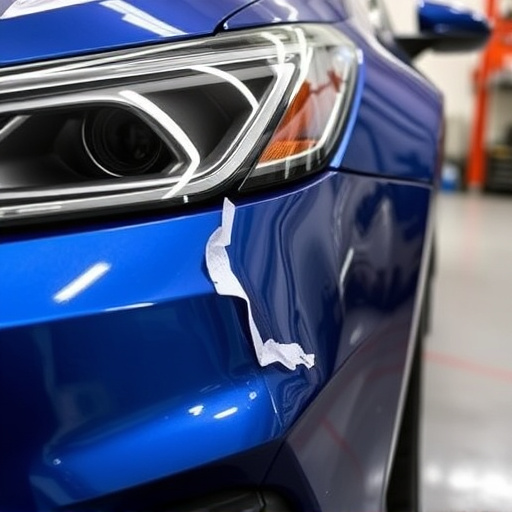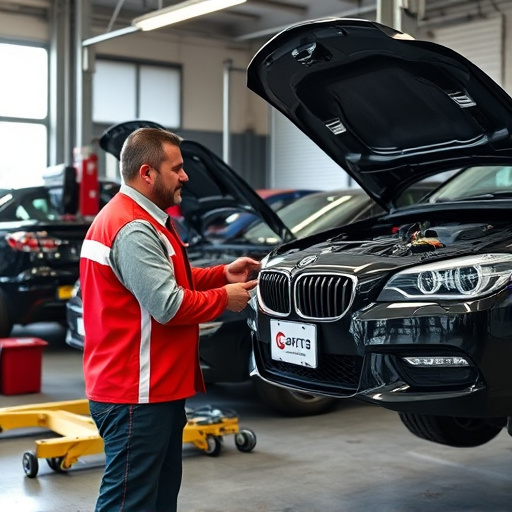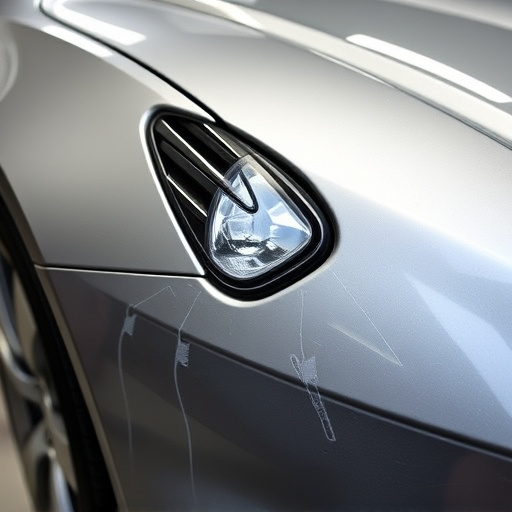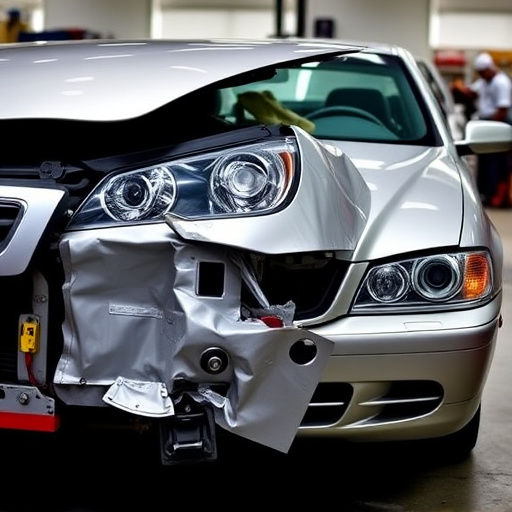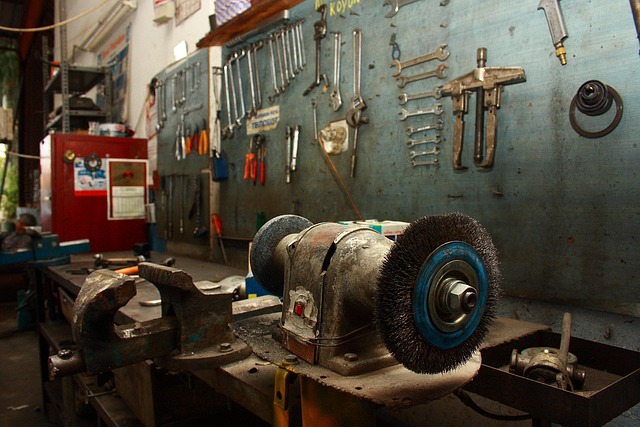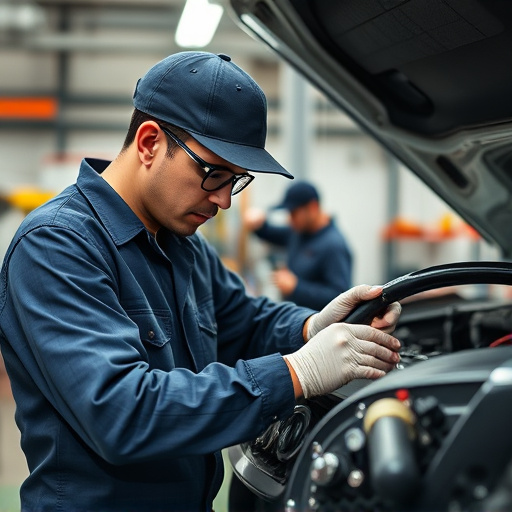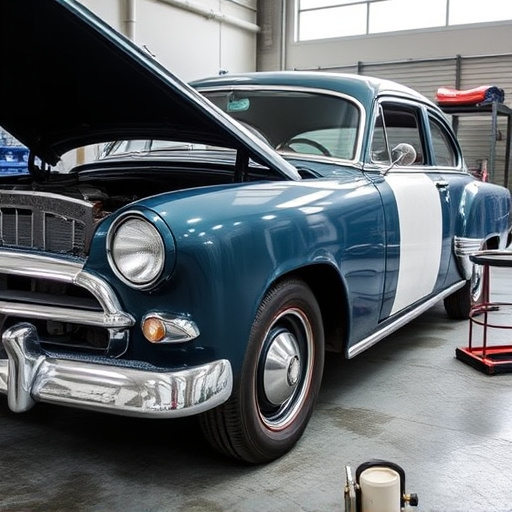Anti-corrosion materials protect metal structures from moisture and chemicals, extending lifespans in various industries, especially automotive repairs. Pre-treatment techniques like sandblasting or chemical etching prepare surfaces for better coating adhesion. Even application and proper substrate preparation ensure long-lasting protection, requiring understanding of material requirements and regular maintenance.
“In the quest for durable and resilient structures, understanding the application of anti-corrosion materials is paramount. This comprehensive guide delves into the essential tips for training professionals on the proper use of these protective coatings. From recognizing key properties that ensure longevity to mastering pre-treatment techniques for optimal adhesion, each step is crucial. We explore effective application methods, guaranteeing even coverage and sustained protection. By adhering to these practices, you can significantly mitigate corrosion, extending the lifespan of various materials.”
- Understanding Anti-Corrosion Materials: Key Properties & Benefits
- Pre-Treatment: Preparing Surfaces for Optimal Coating Adhesion
- Application Techniques: Ensuring Even Coverage & Longevity
Understanding Anti-Corrosion Materials: Key Properties & Benefits
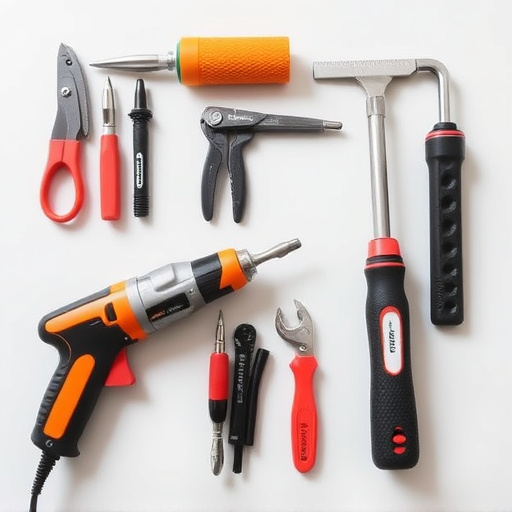
Anti-corrosion materials are a vital component in protecting various surfaces from the detrimental effects of rust and corrosion. These materials possess unique properties that make them indispensable across diverse industries, including automotive repair and tire services. One of their key benefits is longevity; they significantly extend the lifespan of metal structures by creating an impenetrable barrier against moisture and chemicals, which are primary catalysts for corrosion.
Moreover, anti-corrosion coatings offer enhanced durability, ensuring that vehicles, machinery, and other metallic assets remain in top condition for extended periods. In the automotive repair sector, for instance, these materials help maintain the structural integrity of cars, preventing damage caused by rust, particularly in regions with high humidity or frequent exposure to salt water. This is equally beneficial for tire services, as anti-corrosion treatments can protect rubber and metal components from accelerated wear and tear, thereby improving overall tire performance and safety.
Pre-Treatment: Preparing Surfaces for Optimal Coating Adhesion

Proper pre-treatment is a fundamental step in ensuring the effectiveness of anti-corrosion materials during coating applications, particularly in automotive repair settings like car repair shops and auto body services. Before applying any protective layer, it’s crucial to prepare the surface to achieve optimal adhesion. This process involves several key techniques designed to clean, degrease, and etch metal surfaces.
For instance, sandblasting or shot-peening can be used to create a roughened surface texture, improving the mechanical bond between the substrate and the coating. Additionally, chemical treatments, such as etching with specific acids, can remove contaminants, rust, and other impurities, creating a clean environment for anti-corrosion coatings to adhere securely. This meticulous preparation not only enhances the durability of the final coat but also guarantees a seamless finish in vehicle repair, ensuring that auto body services provide long-lasting protection against corrosion.
Application Techniques: Ensuring Even Coverage & Longevity

When applying anti-corrosion materials, whether it’s for automotive restoration or industrial purposes, achieving even coverage is paramount to ensure effectiveness. Techniques like spraying, brushing, or rolling should be employed with precision, aiming for a consistent film build across all surfaces. Proper preparation of the substrate is key; cleaning and degreasing auto body parts before application ensures the anti-corrosion coating adheres well and provides lasting protection against rust and corrosion.
For longevity, consider the specific requirements of the anti-corrosion material you’re using. In auto repair services and auto body repairs, this might involve curing the coat at optimal temperatures or allowing sufficient drying time between coats, as recommended by the manufacturer. Regular maintenance, such as reapplication after certain periods or in case of damage, can also extend the lifespan of these protective layers, maintaining the integrity of auto body services and ensuring components remain in top condition for years to come.
Training and understanding the correct application of anti-corrosion materials are essential steps in safeguarding against corrosion. By mastering pre-treatment techniques and employing effective application methods, individuals can ensure long-lasting protection for various surfaces. These practices not only extend the lifespan of structures but also contribute to cost-efficiency and environmental sustainability by reducing the need for frequent replacements.

